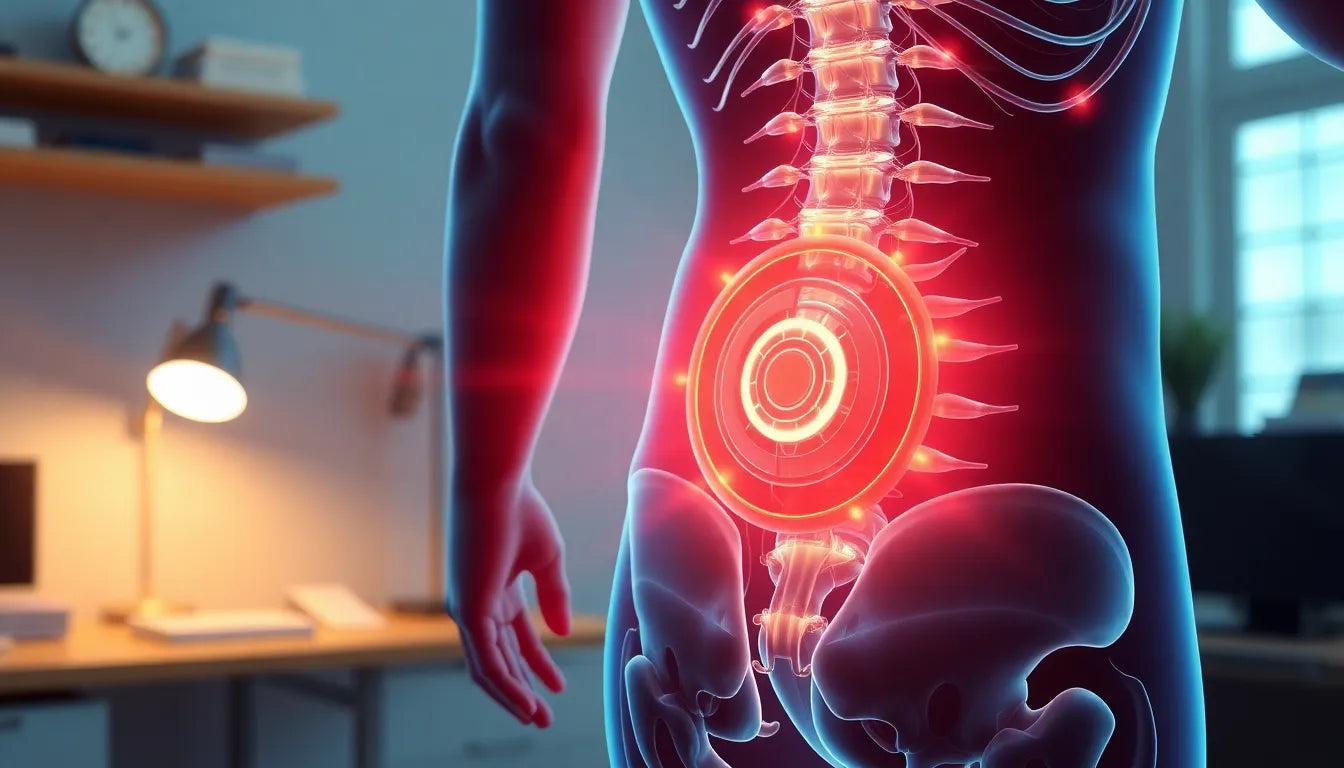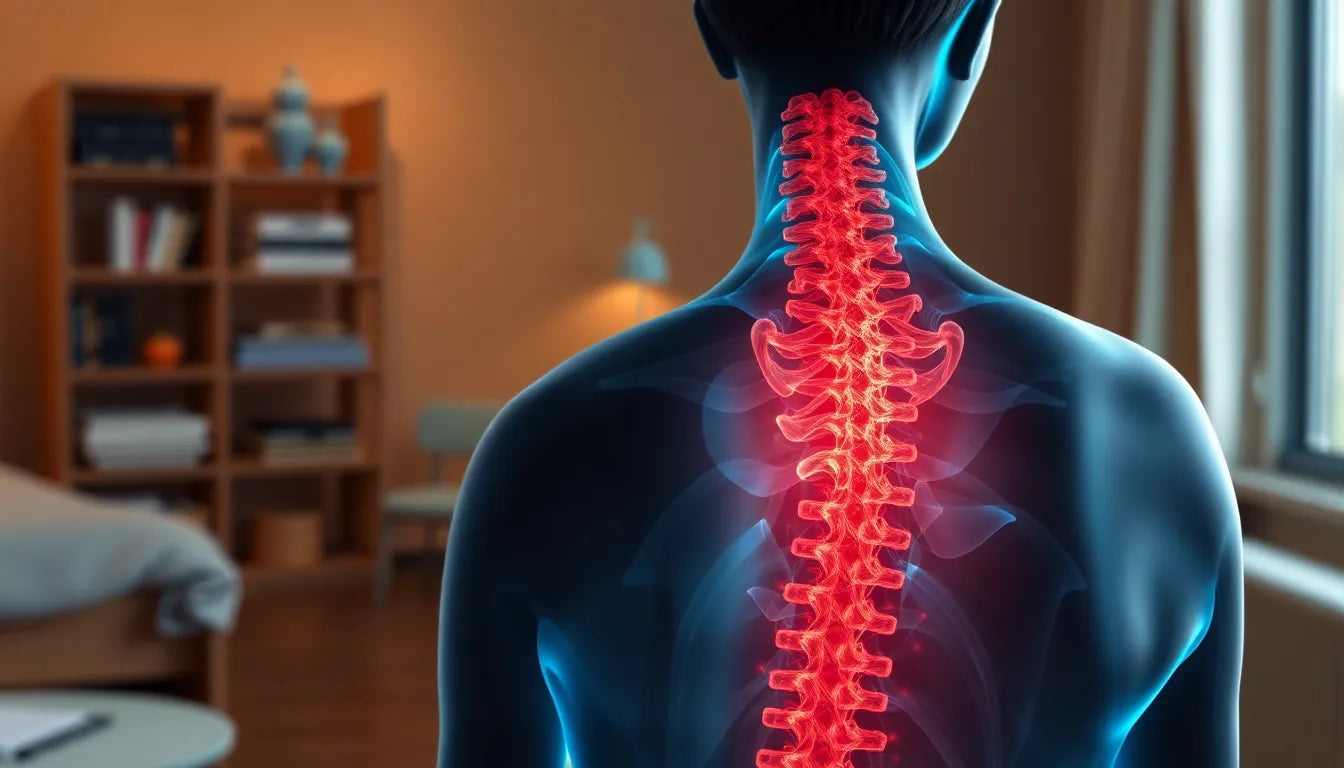For individuals grappling with the discomfort of a herniated disc, the search for relief can often feel like navigating a complex maze. Massage therapy frequently emerges as a popular option, promising relaxation and pain relief. However, there's a lingering concern: can massage make a herniated disc worse? This dilemma is common among those seeking comfort while being wary of potential risks.
understanding herniated discs
A herniated disc occurs when the soft, gel-like center of a spinal disc pushes through a crack in its tougher exterior. This condition can irritate nearby nerves, leading to symptoms such as pain, numbness, or weakness in the affected area. The discomfort can range from mild to severe, often impacting daily activities and overall quality of life. As people seek ways to manage these symptoms, massage therapy often appears as a viable solution.
purpose of the post
This blog post aims to delve into the question of whether massage can be a source of relief or a potential risk for those with herniated discs. By examining the benefits and possible drawbacks of massage therapy in this context, we hope to provide clarity and guidance for individuals considering this treatment option. In the following sections, we will explore the therapeutic potential of massage, the importance of technique, and how it fits into a broader treatment plan for herniated disc management.
benefits of massage for herniated discs
Massage therapy is often lauded for its potential to alleviate the discomfort associated with herniated discs. One of the primary benefits is pain relief. By promoting relaxation and reducing muscle tension, massage can help decrease the intensity of pain that often accompanies this condition. Additionally, massage can enhance circulation, which is crucial for delivering nutrients and oxygen to the affected area, thereby aiding the body's natural healing processes.
Beyond immediate pain relief, regular massage sessions can improve flexibility and range of motion. This is particularly beneficial for those with herniated discs, as increased mobility can help prevent further injury and support overall spinal health. Furthermore, the stress-reducing effects of massage cannot be underestimated. Chronic pain often leads to increased stress, which can exacerbate symptoms. By providing a relaxing experience, massage can help reduce stress levels, contributing to a better overall sense of well-being.
potential risks and considerations
importance of proper technique and therapist
While the benefits of massage for herniated discs are notable, it is crucial to approach this therapy with caution. The effectiveness of massage largely depends on the technique used and the expertise of the therapist. An experienced therapist who understands the complexities of herniated discs can tailor their approach to avoid exacerbating the condition. Improper techniques or excessive pressure can potentially worsen symptoms, making it essential to choose a therapist with a proven track record in treating similar conditions.
integrating massage with other treatments
For optimal results, massage should be part of a comprehensive treatment plan. Combining massage with other therapies, such as physical therapy or chiropractic care, can enhance its effectiveness. A collaborative approach, guided by healthcare professionals, ensures that all aspects of the condition are addressed. This holistic strategy not only targets pain relief but also supports long-term recovery and prevents future complications.
| Treatment | Benefits |
|---|---|
| Massage Therapy | Pain relief, improved circulation, stress reduction |
| Physical Therapy | Strengthening muscles, improving flexibility |
| Chiropractic Care | Spinal alignment, reducing nerve pressure |
specific massage techniques
deep tissue massage
Deep tissue massage is a technique that focuses on the deeper layers of muscle and connective tissue. When executed correctly, it can be highly effective in relieving chronic pain and tension. However, due to its intensity, it must be performed with care to avoid aggravating the herniated disc. A skilled therapist will apply the appropriate amount of pressure to ensure that the technique is beneficial rather than harmful.
myofascial release
Myofascial release is another technique that can be beneficial for individuals with herniated discs. This method involves gentle, sustained pressure on the myofascial connective tissue to release tension and improve mobility. Unlike deep tissue massage, myofascial release is less intense and focuses on relieving restrictions without applying excessive force to the affected area.
trigger point therapy
Trigger point therapy targets specific areas of muscle tension, known as trigger points, which can contribute to pain and discomfort. This technique requires precision and a gentle touch to prevent further irritation of the herniated disc. When applied correctly, trigger point therapy can effectively reduce pain and improve muscle function.
conclusion: balancing relief and risk
Massage therapy can offer significant benefits for individuals with herniated discs, providing pain relief, improved circulation, and reduced stress. However, it is essential to approach this treatment with caution. The key to maximizing the benefits while minimizing risks lies in selecting a qualified therapist and ensuring that massage is part of a comprehensive treatment plan. By integrating massage with other therapies, such as physical therapy or chiropractic care, individuals can achieve a holistic approach to managing their condition.
While techniques like deep tissue massage, myofascial release, and trigger point therapy can be effective, they must be performed with precision and care. Communication with the therapist is crucial to ensure that the methods used are appropriate and do not exacerbate the condition. Ultimately, with the right approach, massage can be a valuable component of a broader strategy for managing herniated discs.
frequently asked questions
Can massage make a herniated disc worse?
Massage can potentially worsen a herniated disc if improper techniques are used, or if the therapist applies excessive pressure. It is crucial to work with a qualified therapist experienced in treating herniated discs to ensure that the massage is beneficial rather than harmful.
What should I communicate to my therapist about my herniated disc?
It is important to discuss your pain thresholds, comfort levels, and any previous treatments or therapies you have undergone. Clear communication helps the therapist tailor the session to your specific needs and avoid exacerbating the condition.
Are there specific massage techniques I should avoid with a herniated disc?
Avoid techniques that involve deep or aggressive pressure, as they can aggravate the condition. Instead, opt for gentle methods such as myofascial release or light trigger point therapy, which focus on relieving tension without excessive force.
How often should I get a massage if I have a herniated disc?
The frequency of massage sessions should be determined in consultation with a healthcare provider. They can provide personalized advice based on your symptoms and overall treatment plan, ensuring that massage complements other therapeutic interventions.
What other treatments can complement massage therapy for herniated discs?
Complementary treatments include physical therapy, chiropractic care, and specific exercises designed to strengthen muscles and improve flexibility. A holistic approach that combines these therapies can enhance recovery and support long-term management of herniated disc symptoms.


















